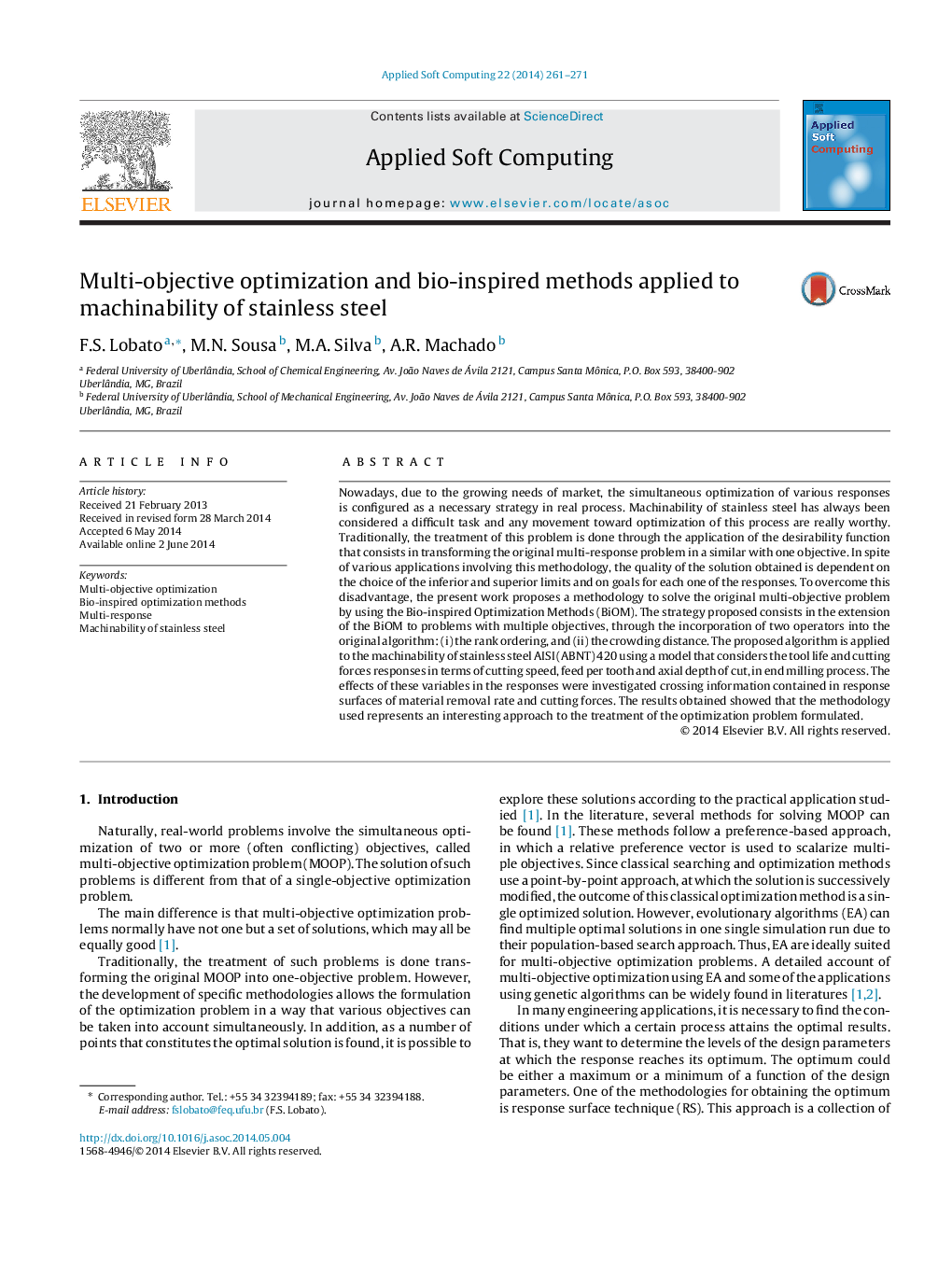| Article ID | Journal | Published Year | Pages | File Type |
|---|---|---|---|---|
| 495351 | Applied Soft Computing | 2014 | 11 Pages |
•Simultaneous optimization with various responses is configured as a necessary strategy in real process.•Machinability of stainless steel has been considered a difficult task and any movement toward optimization of this process are really worthy.•Traditionally, the treatment of this problem is done through the application of the desirability function.•The present work proposes a methodology to solve the problem by using the BOM.•The proposed algorithm is applied to the machinability of stainless steel ABNT420.
Nowadays, due to the growing needs of market, the simultaneous optimization of various responses is configured as a necessary strategy in real process. Machinability of stainless steel has always been considered a difficult task and any movement toward optimization of this process are really worthy. Traditionally, the treatment of this problem is done through the application of the desirability function that consists in transforming the original multi-response problem in a similar with one objective. In spite of various applications involving this methodology, the quality of the solution obtained is dependent on the choice of the inferior and superior limits and on goals for each one of the responses. To overcome this disadvantage, the present work proposes a methodology to solve the original multi-objective problem by using the Bio-inspired Optimization Methods (BiOM). The strategy proposed consists in the extension of the BiOM to problems with multiple objectives, through the incorporation of two operators into the original algorithm: (i) the rank ordering, and (ii) the crowding distance. The proposed algorithm is applied to the machinability of stainless steel AISI (ABNT) 420 using a model that considers the tool life and cutting forces responses in terms of cutting speed, feed per tooth and axial depth of cut, in end milling process. The effects of these variables in the responses were investigated crossing information contained in response surfaces of material removal rate and cutting forces. The results obtained showed that the methodology used represents an interesting approach to the treatment of the optimization problem formulated.
Graphical abstractFigure optionsDownload full-size imageDownload as PowerPoint slide
